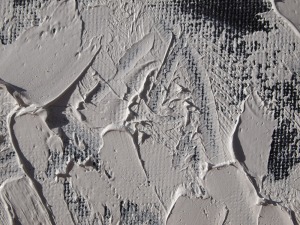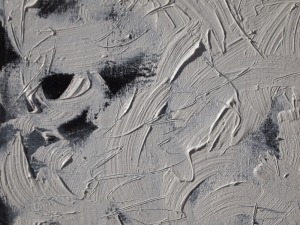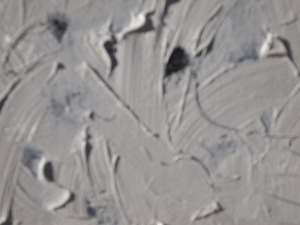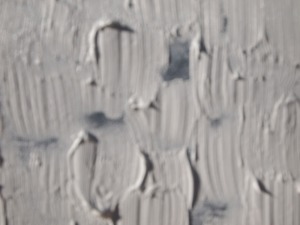Above are 4 examples of my homework of the week for Ryman.
They are on canvas pad, which I found to be an economical means to multiple experiments. Although most people think of him as an abstract painter, Ryman considers himself to be a Realist painter. Not in the sense of depicting a real to life scenario on canvas, but rather exploring the very real qualities of the materials of painting in themselves. What paint can do.
It was interesting to note, during the course at MoMa, how each week was strategically placed in a certain order, to acquaint us with various perspectives, before studying the next artist, and how those new ways of thinking about the art making process built on one another to enhance how we were thinking about what we were doing. I can appreciate it so much more in hindsight. Starting with the minimalism of Newman and his relentless experimentation with surface and with the composition of a simple 'zip', to Robert Ryman and his dedication to the discovering the endless variations of what can be done with the qualities of paint. The physicality of painting and how each manner of brush stroke produces a different effect and outcome, how solvent and medium change the consistency and opacity of color and how one can manage to explore all of this without using contrasting color.
Ryman is best known for his 'White' paintings, although it is amazing to learn how many variations of white there are! (Warm whites like Zinc and cool whites light Titanium.) Ryman started out his young life as a jazz musician, enjoying BeBop, rather than free form. He liked his structure. He joined the Army reserves and played throughout the South for a couple of years before leaving Nashville for New York, where he admits to viewing life through the lens of a tourist. This way of seeing things seems to come through in his approach to art maker later on too. Apparently he stumbled upon an art store and decided to buy a little oil paint, canvas board and some brushes. He had no formal training, he just decided to play around and see what different things would do. He laid on paint thickly, added solvent to see how it thinned and what that would look like and so on. This original experience with paint became the method by which we know him now. His impulse to see how paint worked and what it did, is the basis for the work that brought him repute.
In 1953 Ryman took a job as a security guard at MoMA until 1960. He took his tourist perspective in with him to work each day and studied the paintings he guarded. During the years he worked there as a guard, the Museum ran a series of Exhibitions featuring the Abstract Expressionist works of Mark Rothko and his contemporaries, later known as the 'New York School Painters'.
In fact it was Rothko's painting of the edges of his canvas', that inspired Ryman to think of a painting as an object, rather than an image presented on a canvas. He went on himself to explore that idea very thoroughly in his 'White' paintings'. Apparently Ryman was not very engaged in the philosophical debates had by the 'New York School' painters. It is said he occasionally visited 'The Cedar Bar' where many a late night, alcohol fueled debate about the arts was had by this group of Abstract artists, but that he rarely joined the discourse and often left feeling more alienated as his approach did not come from a deep psychological need to express himself, rather an acute curiosity in the physically of the act of painting.
Many reviews debated the meaning behind his 'White' works, but he experimented with the full spectrum of color, one at a time, before stumbling on the fact that white, as a color itself posed less of a distraction from the subject matter of the paint itself. I love the simplicity in that! In fact most of his reductive tendencies were decisions made from that same place of simplicity. The square shape of his canvas was chosen so as not to present an issue of composition to deal with.
I'll leave off with a quote from Ryman; "I don't think of myself as making white paintings. I make paintings. White paint is my medium"
A short video showing some of Ryman's work.
[youtube http://www.youtube.com/watch?v=_qlf6yKqNY4]




